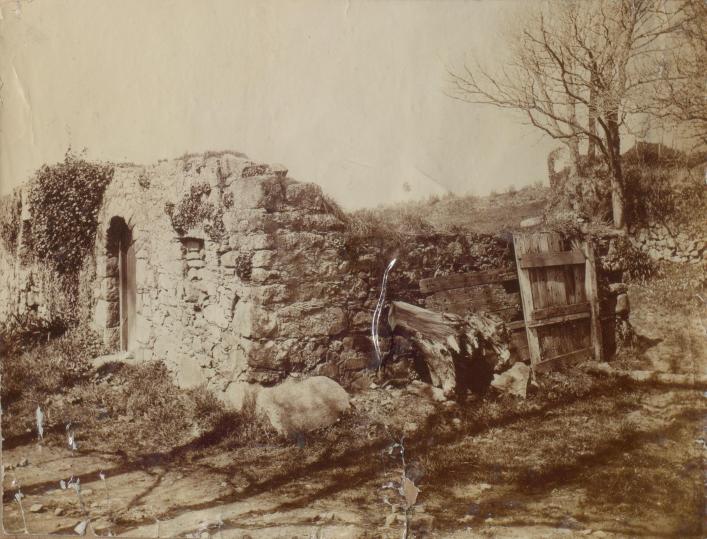Lost things: La Magdelaine
18th February 2016
A rather romanticised article by T Walter Carey, before 1892, probably from the Star newspaper. The photograph above is the one referred to in the article, from the Library Collection (blue cuttings book, Guernsey II, staff.) According to Lenfestey, H, Guernsey Place Names, 2014, this estate actually took its name from Magdeleine Gallienne, the widow of Abraham Lenfestey, in the early 18th century.
St Peter in the Wood Parish: La Magdelaine
Few estates in this parish can vie in the sacredness, antiquity, and beauty of this favoured spot. The name clearly indicates monastic origin, possibly it was a branch of La Magdelaine de Saulse (viz., the weeping willow) at Caen, this Island being anciently much associated with that Norman town. The original monastic building is a mere ruin standing in a field at the end of a small bridle pathway. One side-wall with a noble archway and windows all filled in with fallen debris and huge boulder-stones, one confused heap, still speak of a former greatness. Fortunately a photograph exists of this venerable edifice. Two other buildings of no less antiquity and importance (though slightly modernized) now named Lislets also were comprised in this estate; most curious and interesting they are too, with their Norman arches, spiral stone stair tower steps and small narrow windows still retaining their diamond-shaped panes introduced with no idea of regularity, in which lay their chief charm. A curious figure-head (some suppose of St Madeleine) was found in the ruin of the original house over a stone fireplace mantel. It has more the appearance of a Satyr than a saint or of a pagan god. The late Mrs Huyshe transported it to Rosenheim, where it now ornaments a round arch facing the road and is well worth seeing.¹ The ancient race of De Garis seems to have been associated with this locality, as also that of Brouard and Le Messurier.
The names of fields inclu[ded] in this monastic boundary are the following:
1 De Pere (Father Confessor.)
2 Michiel.
3 Les Georgés.
4 Hougue Falle, furze-brake.
5 Les Roussillions (two fields).
6 De Haut.
7 La Trappe.
8 Les Grandes Rues (2 fields.)
¹ Edith Carey writes a note: 'Now over the front door of the Baron de Coudenhove's house, La Fallaize, above Petit Bot (1927: S Henry).'
